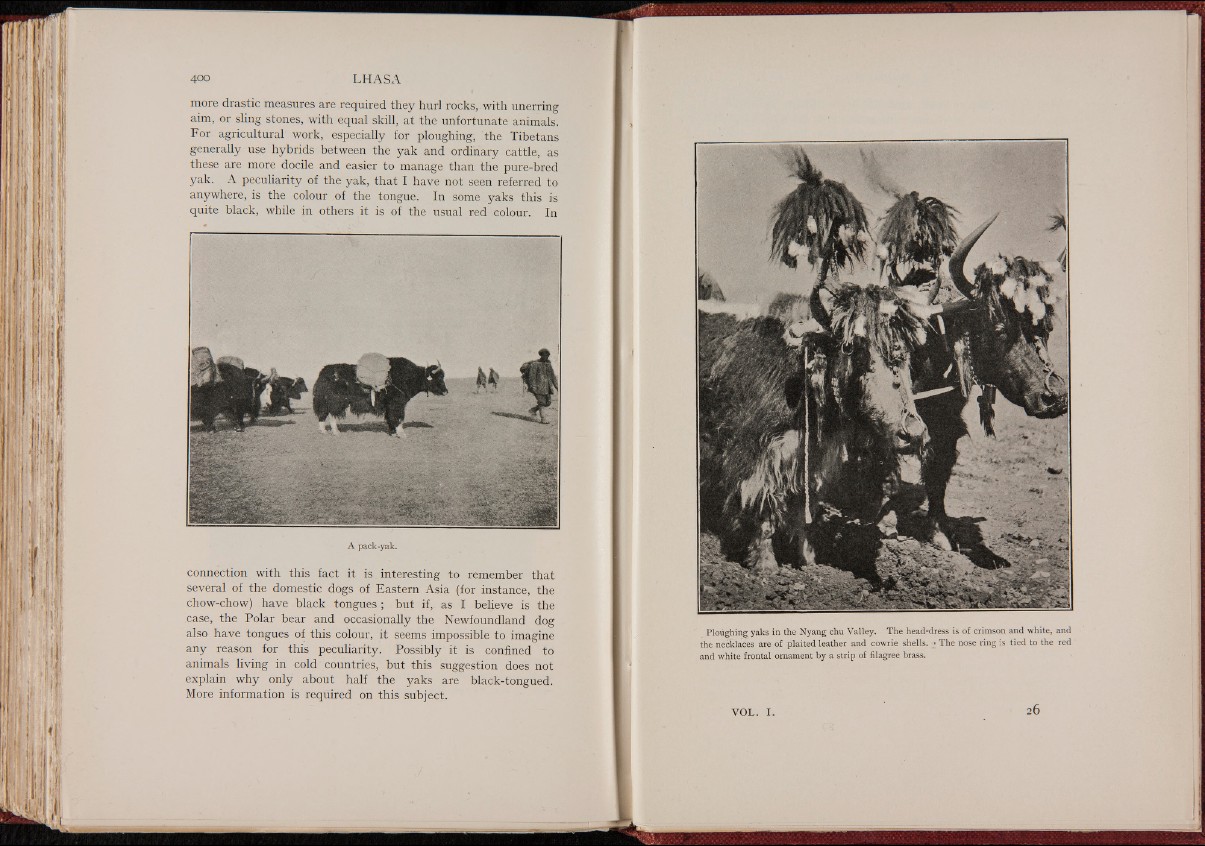
LHASA
more drastic measures are required they hurl rocks, with unerring
aim, or sling stones, with equal skill, at the unfortunate animals.
For agricultural work, especially for ploughing, the Tibetans
generally use hybrids between the yak and ordinary cattle, as
these are more docile and easier to manage than the pure-bred
yak. A peculiarity of the yak, that I have not seen referred to
anywhere, is the colour of the tongue. In some yaks this is
quite black, while in others it is of the usual red colour. In
A pack-yak.
connection with this fact it is interesting to remember that
several of the domestic dogs of Eastern Asia (for instance, the
chow-chow) have black tongues ; but if, as I believe is the
case, the Polar bear and occasionally the Newfoundland dog
also have tongues of this colour, it seems impossible to imagine
any reason for this peculiarity. Possibly it is confined to
animals living in cold countries, but this suggestion does not
explain why only about half the yaks are blaGk-tongued.
More information is required on this subject.
Ploughing yaks in the Nyang chu Valley. The head-dress is of crimson and white, and
the nectrla!ces are of plaited leather and cowrie shells. The nose ring is tied to the red
and white frontal ornament by a strip of filagree brass.
VOL. I. 26
I